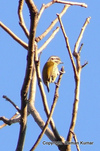Genus Picumnus

White-wedged Piculet - Its natural habitats are subtropical or tropical dry forests, subtropical or tropical moist lowland forests, and dry savanna.
Bar-breasted Piculet - Its natural habitats are subtropical or tropical moist lowland forests and heavily degraded former forest.
Plain-breasted Piculet - Its natural habitats are subtropical or tropical moist lowland forests and heavily degraded former forest.
Chestnut Piculet - Its natural habitats are subtropical or tropical dry forests, subtropical or tropical mangrove forests, and subtropical or tropical dry shrubland.
White-barred Piculet - Its natural habitats are subtropical or tropical dry forests, subtropical or tropical moist lowland forests, and heavily degraded former forest.
Picumnus dorbignyanus - The Ocellated Piculet is a species of bird in the Picidae family. It is found in Argentina, Bolivia, and Peru. Its natural habitats are subtropical or tropical moist montanes and heavily degraded former forest.
Golden-spangled Piculet - Its natural habitats are subtropical or tropical moist lowland forests and heavily degraded former forest.
Tawny Piculet - Its natural habitats are subtropical or tropical dry forests, subtropical or tropical moist lowland forests, and dry savanna. It is threatened by habitat loss.
Rusty-necked Piculet - Its natural habitats are subtropical or tropical moist lowland forests and subtropical or tropical swamps. It is threatened by habitat loss.
Grayish Piculet - Its natural habitats are subtropical or tropical dry forests, subtropical or tropical moist lowland forests, and heavily degraded former forest.
Speckled Piculet - It is found in Bangladesh, Bhutan, Cambodia, China, Hong Kong, Indonesia, Laos, Malaysia, Myanmar, Nepal, Pakistan, Republic of India, Thailand, and Vietnam. Its natural habitats are boreal forests, subtropical or tropical moist lowland forests, and subtropical or tropical moist montane forests.
Lafresnaye's Piculet - Its natural habitat is subtropical or tropical moist lowland forests.
Ochraceous Piculet - Its natural habitat is subtropical or tropical dry forests. It is threatened by habitat loss.
Guianan Piculet - Its natural habitats are subtropical or tropical moist lowland forests, subtropical or tropical mangrove forests, and heavily degraded former forest.
Mottled Piculet - Its natural habitat is subtropical or tropical moist lowland forests. It is becoming rare due to habitat loss.
Olivaceous Piculet - Its natural habitats are subtropical or tropical dry forests, subtropical or tropical moist lowland forests, and heavily degraded former forest.
Orinoco Piculet - Its natural habitat is subtropical or tropical moist lowland forests.
Spotted Piculet - Its natural habitat is subtropical or tropical dry forests.
Rufous-breasted Piculet - Its natural habitats are subtropical or tropical moist lowland forests and heavily degraded former forest.
Ecuadorian Piculet - Its natural habitat is subtropical or tropical dry forests.
White-bellied Piculet - Its natural habitats are subtropical or tropical dry forests, subtropical or tropical moist lowland forests, and heavily degraded former forest.
Scaled Piculet - Its natural habitats are subtropical or tropical dry forests, subtropical or tropical moist lowland forests, and heavily degraded former forest.
Speckle-chested Piculet - Its natural habitat is subtropical or tropical moist montanes. It is threatened by habitat loss.
Fine-barred Piculet - Its natural habitats are subtropical or tropical moist lowland forests and heavily degraded former forest.
Ochre-collared Piculet - Its natural habitats are subtropical or tropical moist lowland forests, subtropical or tropical dry shrubland, and heavily degraded former forest.
Varzea Piculet - Its natural habitats are subtropical or tropical moist lowland forests, subtropical or tropical swamps, subtropical or tropical dry shrubland, and heavily degraded former forest.

